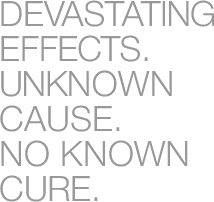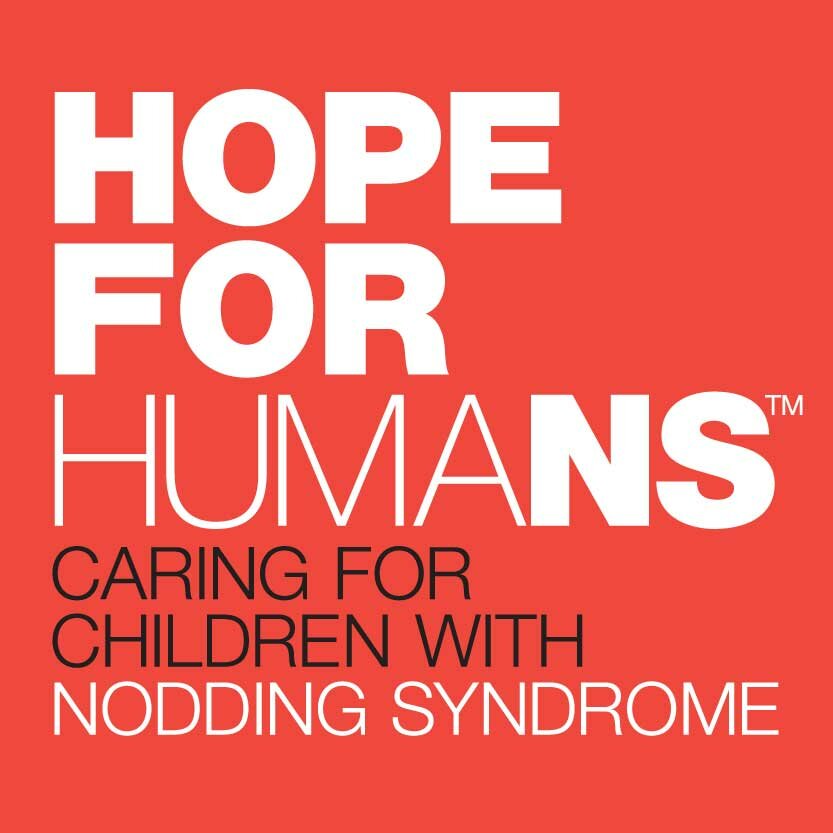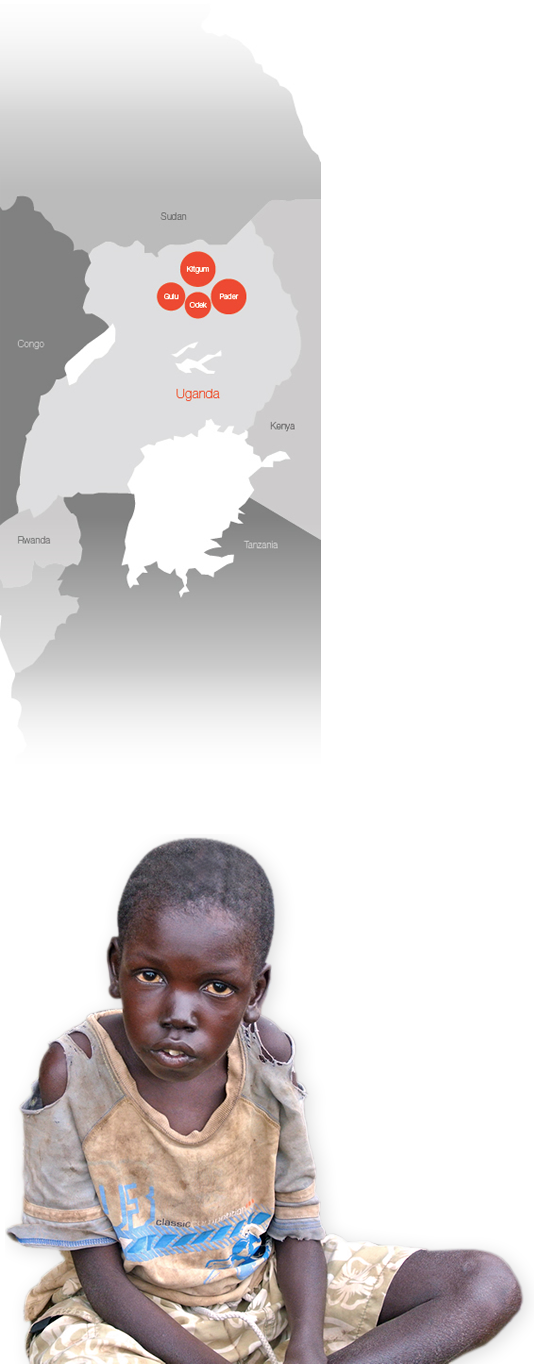ABOUT NODDING SYNDROME
NODDING SYNDROME IS A MYSTERIOUS DISEASE AFFECTING THE BRAIN AND NERVOUS SYSTEM OF CHILDREN IN UGANDA, SUDAN, AND TANZANIA. THE DISEASE IS CHARACTERIZED BY A NODDING OF THE HEAD, PRODUCED BY SEIZURES, AND LEADS TO COGNITIVE IMPAIRMENT.
THERE IS NO KNOWN CAUSE OR CURE BUT WITH CAREFUL TREATMENTS THE HEATH OF THESE CHILDREN CAN DRASTICALLY IMPROVE.
What is Nodding Syndrome (NS)?
The Scientific Response
What Can Be Done Now?
What makes Uganda Unique?
Bringing HOPE.
What is Nodding Syndrome (NS)?
Nodding Syndrome was first described 40 years ago, but was so rare it did not merit significant medical attention until 2010, when outbreaks occurred in South Sudan, Tanzania, and Uganda, affecting thousands of children.
Nodding Syndrome is a mysterious illness that affects the brains and nervous system of children, primarily between the ages of 5-15. Children display a sleepy appearance and appear to “nod off” and lose contact with the world around them. They are not sleeping, but in fact experiencing seizures. During times of seizures, they cannot control body movement and are prone to wander off—sometimes falling into fires or drowning in bodies of water, causing disfigurement or even death.
Each seizure (and there can be many each day) causes increased diminishment in mental capacity. Over the course of time, many children develop severe growth retardation; a child who is 12 or 13 chronologically will appear to be 6 or 8 years old. Children lose control of their bodies and can no longer perform basic acts of hygiene, feeding or dressing, eventually regressing to an almost infantile stage.
Along with extreme physical limitation, children become cognitively impaired, experience behavioral issues, and, as a result, can no longer attend school or are thrown out of school. Local schools do not have the resources or expertise to care for and instruct children with severe special needs.
Strangely, these seizures appear to be triggered by food, leading to severe malnutrition, as parents are not able to feed their children. There also appears to be a linkage to cold, as temperature seems to trigger attacks.
While some children are able to study in a special needs classroom and eat nutritious meals, many require full time care, with the result that parents must cease work or are unable to tend crops and feed their families. Because there are no safe places of care, parents frequently tie their children to trees or posts for their own safety to keep them from wandering into dangerous places.
A tour through villages in this region will reveal the shocking effects of these accidents: children who are horribly burned, disfigured or suffering with broken limbs.
Eventually Nodding Disease kills many of its victims. Death appears often to be a result of such accidents: drowning, falling into a cook fire, or starvation, as seizures in the late stages of the disease make it virtually impossible for the child to eat.
No one is known to have recovered from the disease.
The Scientific Response
Scientists from around the world have been unable to determine the cause. This condition has been studied by the World Health Organization and the Centers for Disease Control, but there are no answers—only questions regarding its cause and treatment. The World Health Organization estimates over 7,000 children have already been affected by Nodding Syndrome in Uganda, South Sudan, and Tanzania—and the number is increasing as well as the geographical area affected.
The first International Medical Symposium on Nodding Syndrome was convened in Kampala, Uganda in August 2012, with over 100 attendees from Europe, North America and Africa, including Hope for Humans’ co-founder Dr. Suzanne Gazda. There is growing interest in learning more about this disease—leading to its eventual cure and eradication.
Theories have linked the disease to Onchocerca volvulus (the organism that causes River Blindness), environmental toxins, vitamin B6 deficiency, vaccine reaction, a fungi found in bush meat, and a host of other theories…but nothing has yet been conclusively proven.
The investigation of Nodding Syndrome is still in its infancy, but already Nodding Syndrome has affected more individuals than all of the recorded cases of Ebola. Now that there is recognition of the disease, and some international support for research into its causes, hopefully better treatment and prevention efforts will follow.
What Can Be Done Now?
As thousands of children become afflicted with this disease, we know that care is desperately needed—and effective. Our first comprehensive Care Center provides a safe place for children so that parents can return to work and support their families. A healthy diet rich in B vitamins has brought weight gain and reduction in seizures, and special schooling has enabled these children to learn. The presence of our Center and medical personnel has reduced local fears and allowed these children and their families to be re-accepted by their communities and villages.
What makes Uganda Unique?
A People Displaced and Brutalized:
The story began 25 years ago when the Acholi tribe of northern Uganda was forced to relocate 2.5 million people into Internally Displaced Persons’ (IDP) camps, escaping the brutality of the Lord’s Resistance Army led by the infamous Joseph Kony. Thousands of children were abducted from their homes and forced to become child soldiers and sex slaves for Kony’s army. Children were psychologically manipulated to murder their own families and become heartless killers. Hundreds of thousands were killed by mass brutality, as well as by the squalid conditions in the IDP camps, where 1,500 people per week died due to malnutrition, lack of clean water, and disease. For more than two decades, they waited for the war to end. Meanwhile, their villages, crops, and livestock were destroyed.
A return to a home that isn’t really “home” anymore:
In 2008, the Acholi people were told to go home. The camps were torn down, literally forcing them out into the bush to start over on their land,. The people couldn’t imagine how they would start over when everything they knew had been destroyed – villages, land, cattle.
NS Appears in Uganda:
The Acholis returned to their homeland with unimaginable memories. They also brought back something even more insidious: a disease that began attacking thousands of children in their tribe known as Nodding Syndrome.
Bringing HOPE.
While there remains no cure, there is hope that this will one day change. Hope for Humans is casting light upon this neglected disease by creating Care Centers to provide medical and personal care, special schooling, and nutritious meals, along with an international awareness campaign that will further research efforts to understand the pathophysiology of this disease and design new treatment protocols.



